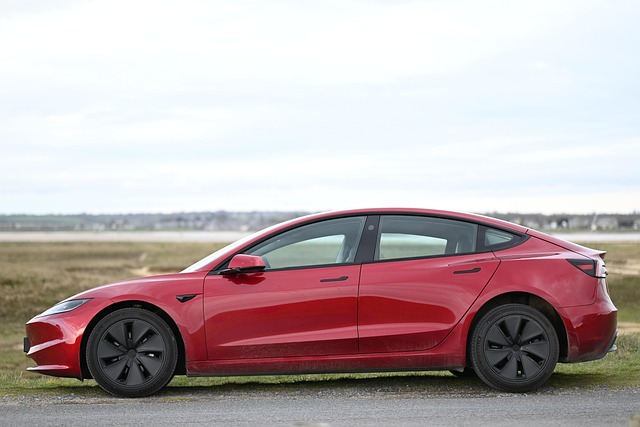In 2023, electric vehicles (EVs) gain popularity as a sustainable solution, driven by global efforts to reduce carbon emissions, with advancements in technology and solar-assisted systems enhancing their appeal. Shared mobility services transform urban travel, offering eco-friendly alternatives to car ownership, especially in cities with low-emission zones. Cities worldwide invest in sustainable infrastructure, expanding bike lanes, walkable designs, and green tech in public transport. Low-emission zones restrict polluting vehicles, encouraging greener alternatives like EV airport shuttles and consumer incentives for eco-friendly cars, aiming to reduce congestion and carbon footprints. Select Sustainable Vehicles play a crucial role in this shift towards greener urban landscapes beyond 2023.
“Unveiling Sustainable Mobility Trends 2023: A Shift Towards Greener Horizons
The year 2023 marks a pivotal moment in the global push for sustainable mobility. This article explores three key trends transforming our transportation landscape: Electric Vehicles (EVs), Shared Mobility, and Sustainable Infrastructure. As we navigate towards a greener future, the rise of select sustainable vehicles is redefining urban travel, offering eco-conscious solutions, and shaping more environmentally friendly networks.”
- Electric Vehicles: The Rising Trend in Green Transport
- Shared Mobility: Revolutionizing Urban Travel
- Sustainable Infrastructure: Building Eco-Friendly Networks
Electric Vehicles: The Rising Trend in Green Transport

Electric Vehicles (EVs) are rapidly gaining traction as a sustainable mobility solution in 2023. The global shift towards greener transportation is evident, with consumers and governments alike embracing the potential of EVs to reduce carbon emissions. This growing trend is not just about city dwellers opting for zero-emission cars; it extends to off-grid electric vehicles designed for remote areas, offering a reliable and eco-friendly alternative to traditional fuel sources.
The popularity of EVs is further fueled by advancements in technology, such as improved battery ranges, faster charging infrastructure, and more affordable options like fuel-efficient hatchbacks under $20k. Solar-assisted heating systems for cars are also gaining attention, providing an additional layer of energy efficiency. As the market continues to evolve, we can expect even more innovations that make electric vehicles a viable and attractive choice for a broader range of consumers.
Shared Mobility: Revolutionizing Urban Travel

Shared mobility services are reshaping urban travel in 2023, offering a sustainable and efficient alternative to traditional car ownership. This trend involves pooling rides through apps and services that connect drivers with available vehicles, reducing the number of cars on the road and minimizing traffic congestion. By selecting sustainable vehicles for these shared mobility programs, cities can further decrease their carbon footprints. Many companies are now integrating eco-friendly practices into their fleets, such as using recycled materials for automotive interiors or even introducing solar-powered vehicles for off-grid living situations.
This shift towards shared mobility is particularly notable in major cities that are implementing low-emission zones to combat air pollution. As a result, sustainable transportation options are becoming increasingly popular among urban dwellers who want to reduce their environmental impact without sacrificing convenience. With the ongoing support of local governments and growing consumer demand for green solutions, shared mobility is poised to play a pivotal role in shaping more sustainable cities in 2023 and beyond.
Sustainable Infrastructure: Building Eco-Friendly Networks

Cities around the globe are prioritizing sustainable infrastructure to support eco-friendly mobility networks. This involves expanding dedicated bike lanes, implementing walkable urban design principles, and integrating public transportation systems with green technologies. The goal is to reduce traffic congestion, lower carbon emissions, and foster healthier living environments. By 2023, many major cities are introducing or expanding low-emission zones, restricting the entry of highly polluting vehicles, and encouraging the adoption of greener alternatives.
One notable trend is the increasing use of select sustainable vehicles, such as electric airport shuttles, which significantly reduce pollution levels. Governments and businesses are also offering green car incentives and rebates to consumers, making eco-friendly vehicles more affordable and appealing. Promoting green driving habits for fuel economy further enhances the efficiency of these vehicles, contributing to a more sustainable future for all.
As we move into 2023, sustainable mobility is no longer a trend but a necessity. With electric vehicles gaining traction and shared mobility services on the rise, the transportation landscape is transforming. Governments and businesses are increasingly investing in sustainable infrastructure, focusing on eco-friendly networks that prioritize public transport, cycling, and walking. By adopting these trends, we can significantly reduce our carbon footprint and contribute to a greener future. Selecting sustainable vehicles and supporting innovative mobility solutions will be key to navigating this new era of efficient and environmentally conscious travel.



